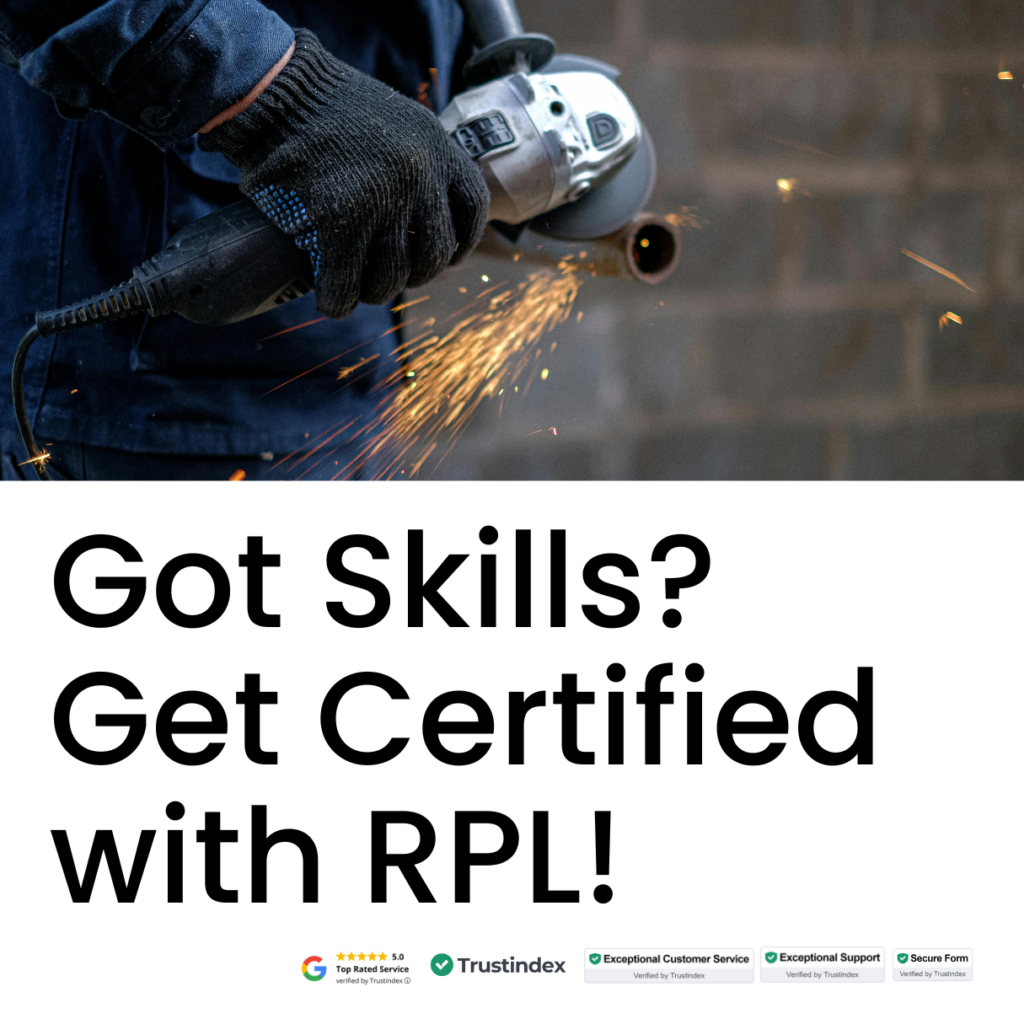When you’re applying for Recognition of Prior Learning (RPL), the quality of your reference letter can make or break your chances of success. It’s not just a formality—it’s a vital document that validates your skills, experience, and competencies to help you earn a nationally recognised qualification. A well-crafted reference letter can set you apart, helping assessors understand your skills, expertise and the value you bring to the table.
If you want your RPL application to stand out, follow this comprehensive guide to writing a reference letter that speaks volumes.
Why is a Reference Letter Crucial for Your RPL Application?
In the RPL process, you’re showcasing your professional experience as equivalent to formal qualifications. The reference letter plays a pivotal role in this by offering an external, unbiased validation of your skills and achievements. It’s more than just a letter, it’s a testament to your capabilities, experience, and readiness for the qualification you’re seeking.
A powerful reference letter not only reinforces your existing qualifications but also boosts the confidence of assessors, proving that you have what it takes to succeed. Think of it as the cherry on top of your RPL application.
Key Components to a Strong RPL Reference Letter
Let’s break it down step-by-step so you can write a letter that not only supports your RPL application but also elevates it.
1. Be Specific and Tailored to the RPL Competencies
A reference letter isn’t a generic recommendation. It must be directly tied to the competencies required for the qualification you’re applying for. If you’re aiming for a Certificate IV in Kitchen Management, for instance, your letter should highlight your kitchen management experience with specific examples, mentioning the roles you’ve undertaken, such as supervising kitchen staff, planning and managing food production, and ensuring health and safety standards are maintained. It should also detail your experience in budgeting, inventory management, and handling customer service in a busy kitchen environment.
Tip: Address each key competency listed in the RPL qualification. Link your achievements to these competencies to show a clear match.
2. Authenticity Over Flattery
A reference letter’s power lies in its honesty. A letter that is overly exaggerated or contains fluff won’t hold weight. Keep it real. Share genuine insights into the applicant’s strengths and growth. If there were areas that needed improvement, mention how the person (you) has actively worked to overcome them. This shows self-awareness and growth, both of which are highly valued by RPL assessors.
Tip: Focus on the positive aspects, but don’t shy away from discussing areas of improvement and how they’ve been addressed.
3. Use Concrete Examples and Measurable Outcomes
Vague praise does little to help your case. Specific examples that demonstrate your accomplishments are key. Did you increase productivity by 25%? Successfully manage a team of 10? Led a team that resulted in cost savings of 15%? These are the types of details that elevate a reference letter from good to outstanding.
Tip: Use numbers, percentages, and real-life outcomes. Action verbs like “led,” “achieved,” “improved,” and “developed” are powerful ways to highlight your contributions.
4. Directly Align With Course Competencies
For the reference letter to have maximum impact, it must address the specific units of competency required for the RPL qualification. The assessor needs to see a clear link between the applicant’s skills and the qualification’s criteria. Breaking the letter into sections that correspond to each competency makes it easier for the assessor to see how the applicant matches the qualifications they are applying for.
Tip: Structure the letter in alignment with the qualification’s key competencies, helping the assessor easily match the applicant’s experience to the qualification.
5. Professional Tone and Structure
While the letter should reflect the true nature of the applicant’s abilities, it must also maintain professionalism. The tone should be positive, yet respectful and formal. A well-structured letter, with a clear introduction, body, and conclusion, reflects well on both the applicant and the writer.
Tip: Stick to formal language, structure the letter clearly, and end with a strong statement of recommendation. This will present the applicant in the best light.
6. Include Contact Information for Verification
A reference letter gains credibility when the assessor knows they can reach the writer for further clarification. Always ensure the letter includes the writer’s full name, position, company, and contact details (email or phone number).
Tips: Make sure to provide all contact details so the assessor can easily verify the information if needed. A reference on official letterhead gives the assessor confidence in the legitimacy of your submission.
Final Thoughts:
A compelling reference letter is an essential part of the RPL process. By focusing on specific competencies, using real examples, and maintaining an honest yet professional tone, you will create a letter that not only supports your application but strengthens it. It’s about presenting a detailed, truthful, and well-organised account of the applicant’s experience, helping assessors see that they meet the requirements for the qualification.
Remember, a reference letter is more than just a formality—it’s a vital part of your RPL application that can help you unlock new career opportunities.
Bonus Tip: Don’t Forget About Your Resume!
While a reference letter is a crucial part of your RPL application, your resume plays an equally important role. It outlines your professional background and skills, helping to further prove your qualifications. If you haven’t yet created or updated your resume, we recommend reading our Tips for Writing a Great Resume for Your RPL Application to ensure it complements your reference letter and strengthens your overall application.
Ready to Begin Your RPL Journey?
At STUDY IN Pty Ltd, we help individuals gain nationally recognised qualifications through Recognition of Prior Learning (RPL). If you’re unsure where to begin, take our Free 40-Second RPL Skill Assessment to find out which qualifications align with your skills and experience.
All qualifications are awarded by our trusted partner RTOs.









